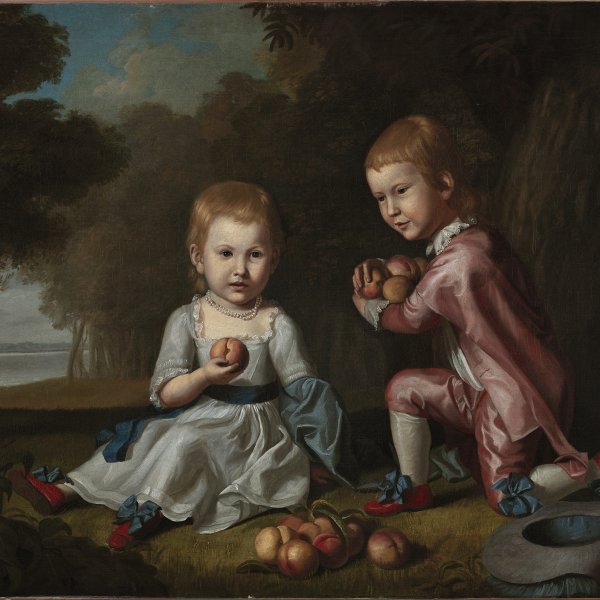Charles Willson Peale
Queens Anne's County, 1741-Philadelphia, 1827
Charles Willson Peale was the first in a line of painters. Of the great artists of the colonial period, among them Benjamin West and John Singleton Copley, he was the only one to remain in the United States following the Declaration of Independence. Peale learned the saddle-making trade and started out as a self-taught artist in the 1760s by observing the work of other painters such as John Hesselius and also Copley, whom he met in Boston in 1765. In 1767 he travelled to London thanks to the financial assistance of a group of businessmen and stayed there for two years to complete his training by studying with Benjamin West. His subsequent development attests to the influence of eighteenthcentury English painting and the work of West in shaping his style.
On returning Peale worked as a portraitist in Maryland and from 1776 in Philadelphia. He was politically active from the revolutionary period onwards. He first took part in the Pennsylvania militia against the British forces and following independence in 1776 he portrayed prominent men and heroes of the new nation. A notable example is the first official full-length portrait of George Washington (1779, Philadelphia, Pennsylvania Academy of the Fine Arts). At the end of the eighteenth century, Peale developed an interest in natural sciences and opened his own museum. Although he did not give up painting completely, he became considerably less active in this field, only executing portraits of people belonging to his closest circle. He handed over the baton to his brother James, his nephew Raphaelle and his sons Rembrandt and Rubens.
Peale was involved in establishing the Pennsylvania Academy of the Fine Arts in 1805 and towards the end of his life, in 1822, he portrayed himself in what would become one of his most representative works: The Artist in his Museum (Philadelphia, Pennsylvania Academy of the Fine Arts).
On returning Peale worked as a portraitist in Maryland and from 1776 in Philadelphia. He was politically active from the revolutionary period onwards. He first took part in the Pennsylvania militia against the British forces and following independence in 1776 he portrayed prominent men and heroes of the new nation. A notable example is the first official full-length portrait of George Washington (1779, Philadelphia, Pennsylvania Academy of the Fine Arts). At the end of the eighteenth century, Peale developed an interest in natural sciences and opened his own museum. Although he did not give up painting completely, he became considerably less active in this field, only executing portraits of people belonging to his closest circle. He handed over the baton to his brother James, his nephew Raphaelle and his sons Rembrandt and Rubens.
Peale was involved in establishing the Pennsylvania Academy of the Fine Arts in 1805 and towards the end of his life, in 1822, he portrayed himself in what would become one of his most representative works: The Artist in his Museum (Philadelphia, Pennsylvania Academy of the Fine Arts).




